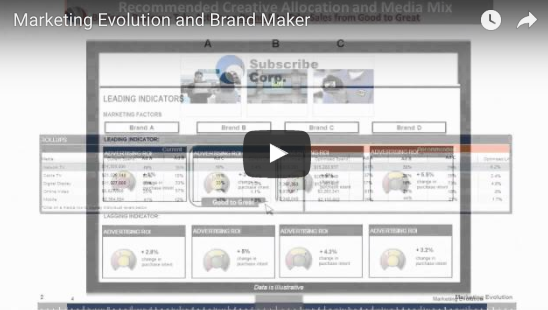What Your Customers Expect from Your Omnichannel Strategy
Learn how Regions Bank Perfected their customer journey

Today’s consumer receives on average a staggering 10,000 marketing messages a day. Whether it’s a print advertisement they view in passing, or a display ad targeted to their mobile device, the overwhelming number of brands trying to reach audiences has forced consumers to grow increasingly particular about the advertisements with which they engage.
In order for businesses to stand out from the competition, it’s crucial they have the capabilities to reach the audiences most likely to resonate with their products and services. What’s more, marketers need insights into the specific ways consumers engage with their brand across online and offline channels. With these insights, marketers will become that much more efficient and impactful in targeting the right customers, through specific channels.
The need for marketing analytics that highlight how to best reach consumers across the marketing mix has prompted the adoption of omnichannel measurement strategy that provides a single, clear view into marketing effectiveness across the board. But what aspects of omnichannel measurement do marketers need, and how can they provide the personalized marketing campaigns today’s consumers demand?
The Importance of Omnichannel Strategy in Marketing
Customers today expect their purchasing experience to be as seamless as possible. From researching a product on a computer, to receiving relevant ads across their devices, consumers want convenience to be seamlessly integrated into the medium they prefer to use. If it is hard for a customer to engage with a brand, it is less likely a business will keep their attention long enough to convert. To provide this seamless experience, marketers need to be able to consistently engage consumers across their entire media mix.
Think of it this way: if customers see an ad on TV that piques their interest, they might research that product or service online. However, their interest doesn’t immediately lead them to purchase. If marketing efforts don’t work in unison across channels to maintain interest and convince those consumers to continue engaging, that opportunity is lost.
However, omnichannel marketing that aligns all marketing channels towards driving customers to purchase isn’t easy. Marketers need copious amounts of data across online and offline channels in order to highlight where customers can be reached, while catering to their unique media consumption preferences.
What Customers Expect from Omnichannel Marketing Strategy
Marketers need omnichannel marketing insights in order to provide seamless and consistent messaging. To create successful campaigns that meet the demands of their customers, marketers need visibility into how consumers react to their messaging throughout the customer journey. To this end, an effective omnichannel strategy needs to illuminate these four key areas, allowing marketers to better meet customer expectations:
How Customers Prefer to Engage with Brands
Given that 90 percent of consumers expect consistent interactions with a brand across channels, it’s crucial that omnichannel measurements highlight how target audiences engage with their efforts across the marketing mix. This way, marketers can ensure they provide a seamless and consistent experience that keeps customers engaged along the sales cycle.
Where the Right Audiences are Along the Marketing Mix
Customers today simply don’t engage with brand messages unless they provide the products or services that are relevant to their unique interests, or solve their problems. In order to optimize marketing efforts and reach the right consumers, omnichannel measurements need to properly identify where target audiences can be found across the customer journey.
What Creative Messages Resonate with Customers
In order to reach customers today, marketers need to come up with the creative messaging that speaks to them at a personal level. While businesses across industries sell similar products and services, creative messaging is what captures audiences and prompts them to consider choosing one offer over a competitor’s. For businesses looking to get the most out of their marketing efforts, the omnichannel measurements they use need to highlight the creative elements that resonate with their audiences.
Shifts in Consumer Trends
One of the biggest mistakes marketers make when trying to reach customers is not adapting marketing strategies as consumer trends shift. Take the recent demise of Toys “R” Us for example. As consumers began shopping for toys more and more online, the business model and overall marketing strategies of the toy store powerhouse remained the same, ignoring the ecommerce trend. As a result, they failed to provide the experience and value consumers demanded.
In order to not only reach customers, but ensure that marketing efforts remain effective, omnichannel measurements need to account for constantly changing consumer trends. Without these insights, marketers will slowly begin to lose touch with their target audiences and miss out on opportunities to resonate with them.
Final Thoughts
Modern consumers expect more from businesses and the marketing efforts they receive from them. Given the overwhelming amount of advertisements geared toward getting their attention, in order to stand out, marketers need to be able to unify their marketing efforts while simultaneously engaging with consumers in ways that meet their needs.
To be successful, marketers must ensure that their omnichannel measurements provide the insights that can highlight, where, when, and how customers prefer to be engaged for the greatest marketing impact.






















